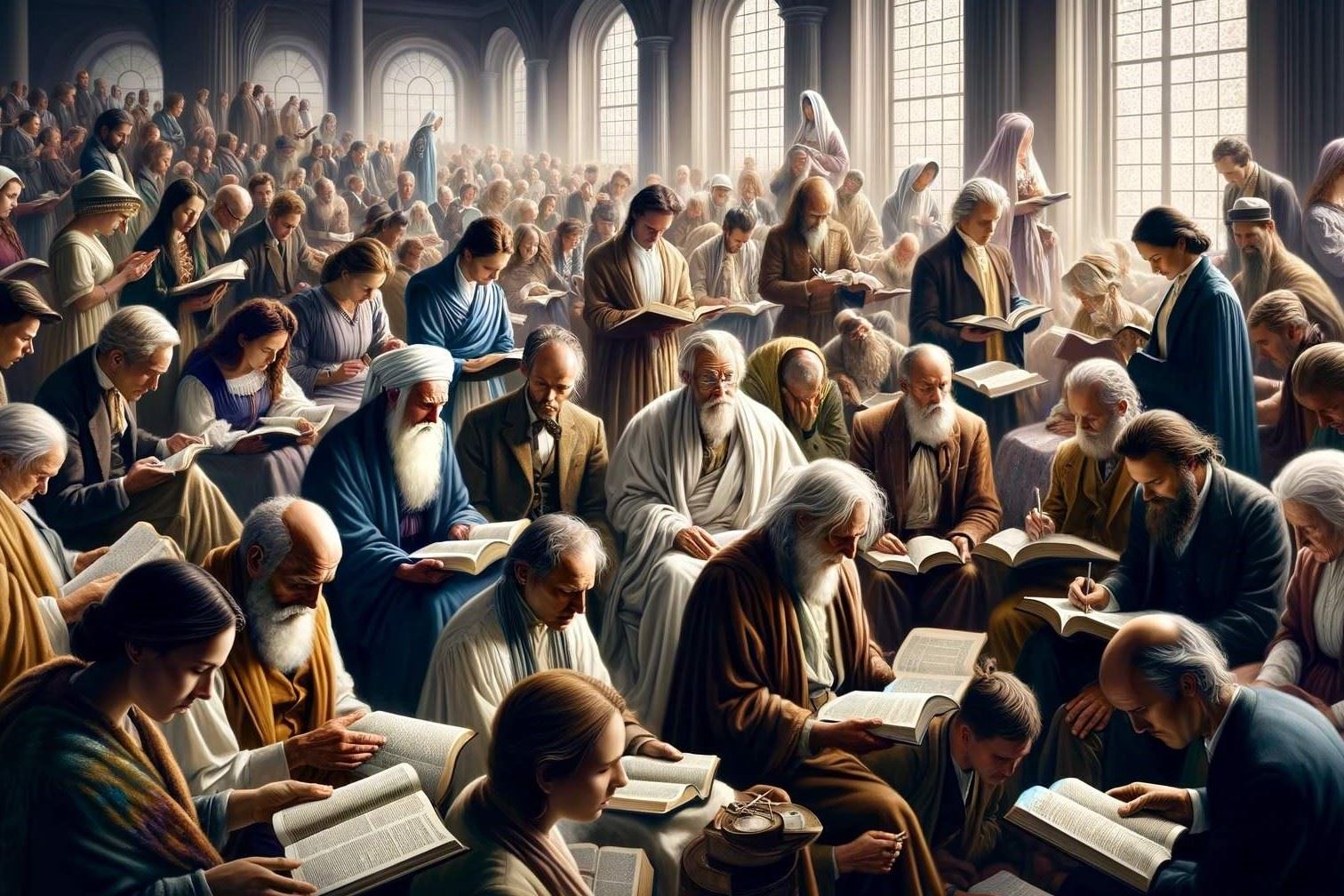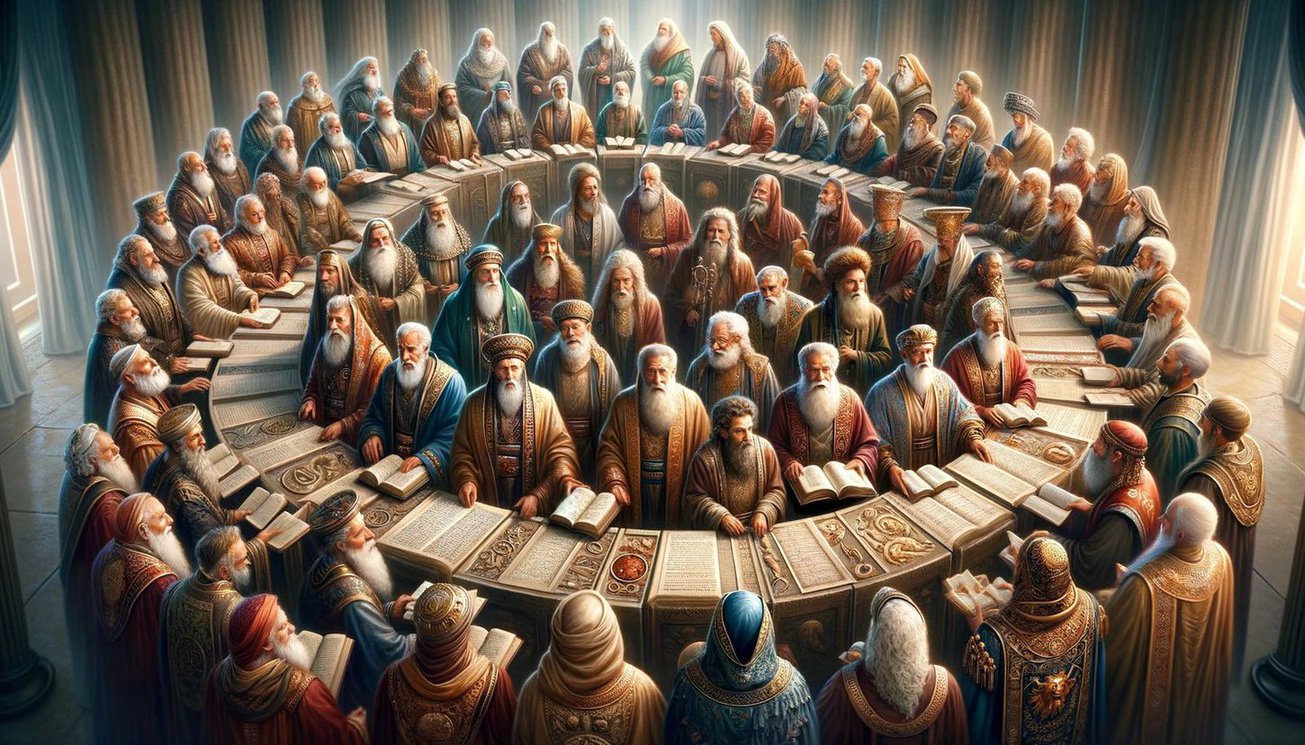Home>Bible Facts>In The Book Of Revelation, Who Does The Beast Represent


Bible Facts
In The Book Of Revelation, Who Does The Beast Represent
Published: February 11, 2024
Peter Smith, Editorial Director at Christian.net, combines deep insights into faith, politics, and culture to lead content creation that resonates widely. Awarded for his contributions to religious discourse, he previously headed a major organization for religious communicators, enhancing dialogue on faith's societal impacts.
Discover the truth about the beast in the Book of Revelation and its representation in the Bible. Uncover fascinating Bible facts about this enigmatic figure.
(Many of the links in this article redirect to a specific reviewed product. Your purchase of these products through affiliate links helps to generate commission for Christian.net, at no extra cost. Learn more)
Table of Contents
Introduction
The Book of Revelation, the final book of the Christian Bible, is a captivating and enigmatic text that has fascinated scholars, theologians, and believers for centuries. At the heart of its apocalyptic imagery and prophetic visions lies the figure of the Beast, a mysterious and ominous entity that has sparked intense debate and speculation. The Beast is a central character in the cosmic drama depicted in Revelation, and understanding its significance is crucial to unraveling the profound messages embedded in this ancient text.
As we delve into the intricate tapestry of Revelation, we are confronted with vivid descriptions of the Beast and its malevolent actions. This enigmatic figure is portrayed as a fearsome creature with ten horns and seven heads, each adorned with blasphemous names. It wields great authority and exerts its influence over the inhabitants of the earth, instilling awe and terror in equal measure. The Beast's association with the number 666 further adds to its mystique, evoking a sense of foreboding and intrigue.
The significance of the Beast extends beyond its literal portrayal, transcending the boundaries of time and space to resonate with profound symbolic and allegorical meanings. Unraveling the identity and nature of the Beast requires a nuanced understanding of historical contexts, theological perspectives, and interpretative frameworks. By peering into the depths of this symbolic entity, we embark on a journey that transcends mere scholarly inquiry, inviting us to contemplate profound truths and timeless wisdom.
In the subsequent sections of this article, we will embark on a compelling exploration of the multifaceted interpretations and symbolic dimensions of the Beast in the Book of Revelation. By delving into the historical, theological, and symbolic layers of this enigmatic figure, we aim to unravel the profound mysteries encapsulated within the apocalyptic visions of Revelation. Join us as we embark on a captivating journey through the labyrinthine passages of biblical prophecy, seeking to illuminate the timeless truths concealed within the cryptic imagery of the Beast.
The Beast in Revelation
The Book of Revelation introduces the Beast as a central figure in its apocalyptic narrative, shrouded in symbolism and mystery. Described in vivid and awe-inspiring imagery, the Beast is depicted as a fearsome entity with ten horns and seven heads, adorned with blasphemous names. Its imposing presence and malevolent nature evoke a sense of dread and fascination, captivating the imagination of readers and scholars alike.
The Beast's portrayal in Revelation is imbued with profound symbolism and allegorical significance, transcending its literal representation to embody complex theological and eschatological themes. Its association with the number 666, often regarded as the "number of the beast," further amplifies its enigmatic nature, inviting fervent speculation and interpretation.
In the cosmic drama of Revelation, the Beast emerges as a formidable antagonist, wielding great authority and exerting its influence over the inhabitants of the earth. Its actions are characterized by deception, coercion, and persecution, reflecting a profound spiritual conflict that permeates the apocalyptic visions of the text.
The symbolic dimensions of the Beast in Revelation invite contemplation of profound theological truths and eschatological themes. Its portrayal as a malevolent force opposing the divine purposes of God underscores the overarching cosmic struggle between good and evil, light and darkness. The Beast's role as a catalyst for tribulation and persecution underscores the profound spiritual and moral challenges inherent in the apocalyptic narrative.
As readers navigate the labyrinthine passages of Revelation, the enigmatic presence of the Beast serves as a focal point for contemplation and interpretation. Its symbolic significance transcends the boundaries of historical contexts, inviting readers to grapple with profound existential and theological questions. The Beast embodies the timeless struggle between the forces of righteousness and the powers of darkness, compelling readers to discern the deeper spiritual truths embedded within its cryptic imagery.
In the subsequent sections of this article, we will delve deeper into the multifaceted interpretations and symbolic dimensions of the Beast in Revelation, seeking to unravel the profound mysteries encapsulated within the apocalyptic visions of this ancient text. Join us as we embark on a captivating journey through the intricate tapestry of biblical prophecy, exploring the profound truths concealed within the cryptic imagery of the Beast.
Interpretations of the Beast
The enigmatic portrayal of the Beast in the Book of Revelation has sparked a myriad of interpretations and theological perspectives throughout history. Scholars, theologians, and believers have grappled with the complex symbolism and allegorical significance of this mysterious entity, yielding diverse and often contrasting interpretations that reflect the richness and complexity of biblical exegesis.
One prevalent interpretation of the Beast revolves around its symbolic representation of oppressive political powers and tyrannical regimes throughout history. In this view, the Beast is seen as emblematic of authoritarian rulers and oppressive systems that have sought to exert dominion over the lives of individuals and communities. The imagery of the Beast's ten horns and seven heads is often associated with specific historical figures or empires, reflecting the enduring struggle against unjust and tyrannical governance.
Another interpretative lens focuses on the spiritual dimensions of the Beast, emphasizing its symbolic embodiment of spiritual deception, idolatry, and moral corruption. Within this framework, the Beast is regarded as a manifestation of the pervasive forces of evil and spiritual darkness that seek to undermine the divine order and lead humanity astray. Its association with the number 666 is often interpreted as a symbolic representation of spiritual imperfection and moral decay, inviting contemplation of profound existential and ethical themes.
Furthermore, some interpretations of the Beast emphasize its eschatological significance, framing it as a key figure in the unfolding of end-time events and the culmination of divine judgment. Within this eschatological framework, the Beast is intricately linked to apocalyptic prophecies and the ultimate triumph of God's sovereignty over the forces of evil. Its portrayal as a malevolent entity engaged in cosmic conflict underscores its pivotal role in the grand narrative of eschatological fulfillment and the establishment of divine justice.
Additionally, interpretations of the Beast often intersect with broader theological themes, including the nature of evil, the sovereignty of God, and the enduring struggle between righteousness and wickedness. The multifaceted interpretations of the Beast in Revelation reflect the profound theological and existential questions that permeate the text, inviting readers to grapple with the complexities of human history, spiritual warfare, and the ultimate purposes of divine providence.
As we navigate the diverse interpretative landscapes surrounding the Beast, we encounter a rich tapestry of theological insights and perspectives that illuminate the enduring relevance and profound depth of the apocalyptic visions in the Book of Revelation. The multifaceted interpretations of the Beast invite readers to engage in contemplation and dialogue, fostering a deeper understanding of the timeless truths encapsulated within the cryptic imagery of this ancient text.
Historical Context
The enigmatic imagery of the Beast in the Book of Revelation is intricately intertwined with the historical context of the first-century Roman Empire, offering profound insights into the socio-political landscape that shaped the author's apocalyptic vision. The period of intense persecution faced by early Christian communities under the oppressive rule of the Roman authorities provides a compelling backdrop for understanding the symbolic dimensions of the Beast and its relevance to the contemporary audience of the text.
During the time of its composition, the Roman Empire exerted hegemonic control over vast territories, imposing its authority through military might and imperial governance. The imperial cult, characterized by the deification of the Roman emperors and the demand for religious allegiance, created a climate of intense political and religious coercion. The refusal of early Christians to participate in the veneration of the emperor and the imperial cult subjected them to severe persecution and marginalization within Roman society.
In this historical context, the portrayal of the Beast in Revelation resonated deeply with the experiences and struggles of the early Christian communities. The Beast's malevolent actions and oppressive dominion mirrored the harsh realities faced by believers living under the shadow of imperial tyranny. The symbolic imagery of the Beast's blasphemous names and coercive authority reflected the pervasive idolatry and political oppression that characterized the Roman imperial system, offering a poignant critique of its unjust and tyrannical nature.
Furthermore, the numerical symbolism associated with the Beast, particularly the enigmatic number 666, has been linked to the practice of gematria, a method of assigning numerical values to letters in ancient languages. Some scholars have suggested that the numerical value of 666 may be associated with specific names or titles of Roman emperors, further underscoring the historical resonance of the Beast as a symbolic representation of oppressive imperial power.
The historical context of the first-century Roman Empire provides a compelling lens through which to interpret the symbolic dimensions of the Beast in Revelation. By situating the apocalyptic visions within the socio-political realities of the time, readers gain a deeper appreciation of the profound theological and existential themes embedded within the text. The historical backdrop of persecution, resistance, and steadfast faith illuminates the enduring relevance of the apocalyptic message, inviting contemporary readers to discern the timeless truths encapsulated within the cryptic imagery of the Beast.
Symbolism of the Beast
The symbolism of the Beast in the Book of Revelation transcends its literal portrayal, encompassing profound theological, historical, and eschatological dimensions that invite contemplation and interpretation. At its core, the Beast embodies a complex tapestry of symbolic meanings that resonate with timeless truths and existential realities, inviting readers to discern the deeper significance of its enigmatic presence within the apocalyptic narrative.
The multifaceted symbolism of the Beast encompasses its representation of oppressive political powers and tyrannical regimes throughout history. The imagery of the Beast's ten horns and seven heads has been associated with specific historical figures or empires, reflecting the enduring struggle against unjust and tyrannical governance. This symbolic dimension underscores the pervasive nature of human oppression and the enduring quest for justice and liberation in the face of systemic tyranny.
Furthermore, the Beast serves as a symbolic embodiment of spiritual deception, idolatry, and moral corruption. Its portrayal reflects the pervasive forces of evil and spiritual darkness that seek to undermine the divine order and lead humanity astray. The association of the Beast with the number 666 invites contemplation of profound existential and ethical themes, highlighting the inherent imperfection and moral decay that permeate human history and spiritual consciousness.
Moreover, the eschatological significance of the Beast underscores its pivotal role in the unfolding of end-time events and the ultimate triumph of divine justice. Within the grand narrative of eschatological fulfillment, the Beast emerges as a central figure in the cosmic conflict between the forces of righteousness and the powers of darkness, symbolizing the culmination of divine judgment and the establishment of God's sovereignty over the course of human history.
The symbolism of the Beast in Revelation resonates deeply with the historical context of the first-century Roman Empire, offering a poignant critique of imperial tyranny and religious coercion. Its enigmatic imagery transcends temporal and cultural boundaries, inviting readers to grapple with profound existential and theological questions that transcend the confines of historical epochs and societal structures.
As readers navigate the labyrinthine passages of Revelation, the symbolism of the Beast beckons them to discern the enduring relevance of its allegorical significance, fostering a deeper understanding of the timeless truths encapsulated within the cryptic imagery of this ancient text.
Read more: Who Is The Woman In Book Of Revelation
Conclusion
The enigmatic presence of the Beast in the Book of Revelation transcends mere literary symbolism, inviting readers to embark on a profound journey of contemplation and interpretation. As we navigate the intricate tapestry of apocalyptic visions and cryptic imagery, the significance of the Beast emerges as a focal point for discerning timeless truths and existential realities that resonate across diverse historical, cultural, and theological contexts.
The multifaceted interpretations of the Beast, ranging from its representation of oppressive political powers to its symbolic embodiment of spiritual deception and moral corruption, underscore the enduring relevance of its allegorical significance. The historical backdrop of the first-century Roman Empire provides a compelling lens through which to interpret the Beast's symbolic dimensions, offering poignant insights into the socio-political realities that shaped the author's apocalyptic vision.
Furthermore, the eschatological significance of the Beast invites readers to contemplate the ultimate triumph of divine justice and the cosmic conflict between the forces of righteousness and the powers of darkness. Its portrayal as a central figure in the unfolding of end-time events underscores the profound theological themes embedded within the apocalyptic narrative, compelling readers to grapple with the complexities of human history, spiritual warfare, and the ultimate purposes of divine providence.
As we conclude our exploration of the Beast in Revelation, we are reminded of the enduring relevance and profound depth of its allegorical significance. The enigmatic presence of the Beast beckons readers to discern the timeless truths encapsulated within its cryptic imagery, fostering a deeper understanding of the profound existential and theological questions that permeate the text. The Book of Revelation, with its vivid apocalyptic visions and enigmatic symbolism, continues to captivate and inspire readers, inviting them to unravel the mysteries of the cosmic drama it unfolds.
In the enigmatic presence of the Beast, we encounter a profound invitation to contemplate the enduring struggle between the forces of righteousness and the powers of darkness, transcending temporal and cultural boundaries to resonate with the deepest recesses of the human spirit. As we partake in this captivating journey through the labyrinthine passages of biblical prophecy, we are reminded that the enigmatic presence of the Beast serves as a testament to the enduring power of biblical symbolism to illuminate the human experience and beckon us to discern the timeless truths that transcend the confines of historical epochs and societal structures.














